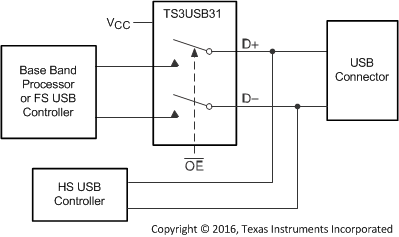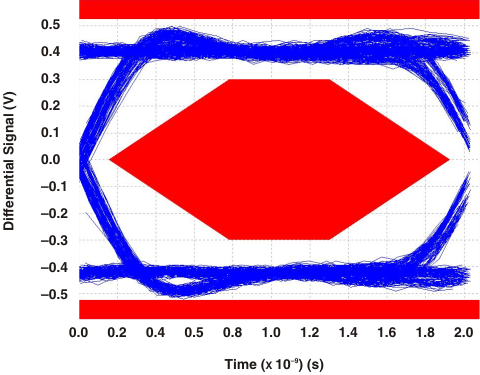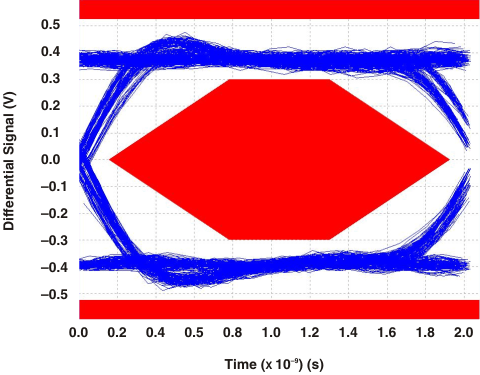SCDS242E July 2007 – August 2016 TS3USB31
PRODUCTION DATA.
- 1 Features
- 2 Applications
- 3 Description
- 4 Revision History
- 5 Pin Configuration and Functions
- 6 Specifications
- 7 Parameter Measurement Information
- 8 Detailed Description
- 9 Application and Implementation
- 10Power Supply Recommendations
- 11Layout
- 12Device and Documentation Support
- 13Mechanical, Packaging, and Orderable Information
Package Options
Mechanical Data (Package|Pins)
- RSE|8
Thermal pad, mechanical data (Package|Pins)
Orderable Information
9 Application and Implementation
NOTE
Information in the following applications sections is not part of the TI component specification, and TI does not warrant its accuracy or completeness. TI’s customers are responsible for determining suitability of components for their purposes. Customers should validate and test their design implementation to confirm system functionality.
9.1 Application Information
The TS3USB31 device is used to isolate a USB bus when it is not in use to prevent two different USB devices from interfering with each other.
9.2 Typical Application
 Figure 13. Application Diagram
Figure 13. Application Diagram
9.2.1 Design Requirements
Design requirements of the USB 1.0, 1.1, and 2.0 standards should be followed. TI recommends that the digital control pin OE be pulled up to VCC or down to ground to avoid undesired switch positions that could result from the floating pin.
9.2.2 Detailed Design Procedure
The TS3USB31 can be properly operated without any external components. However, it is recommended that unused pins be connected to ground through a 50-Ω resistor to prevent signal reflections back into the device.
The N.C pin should be left floating.
9.2.3 Application Curves

